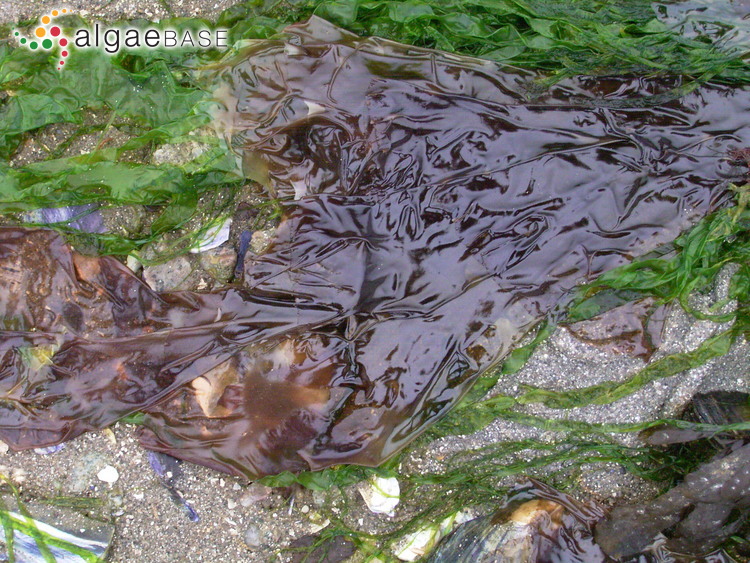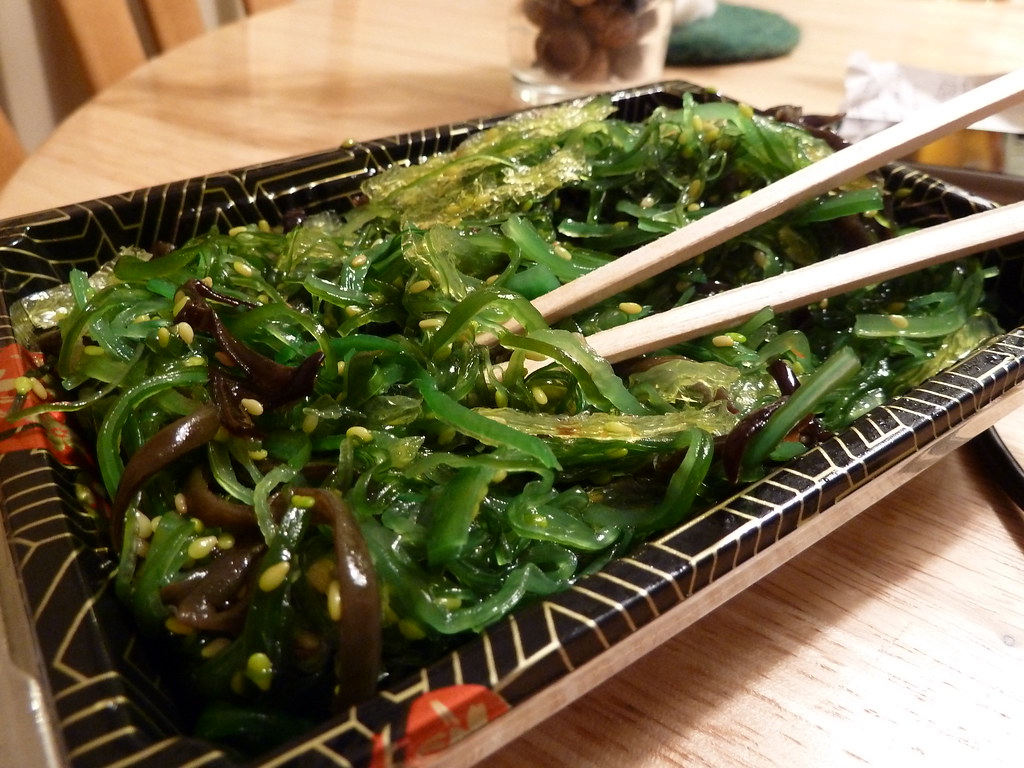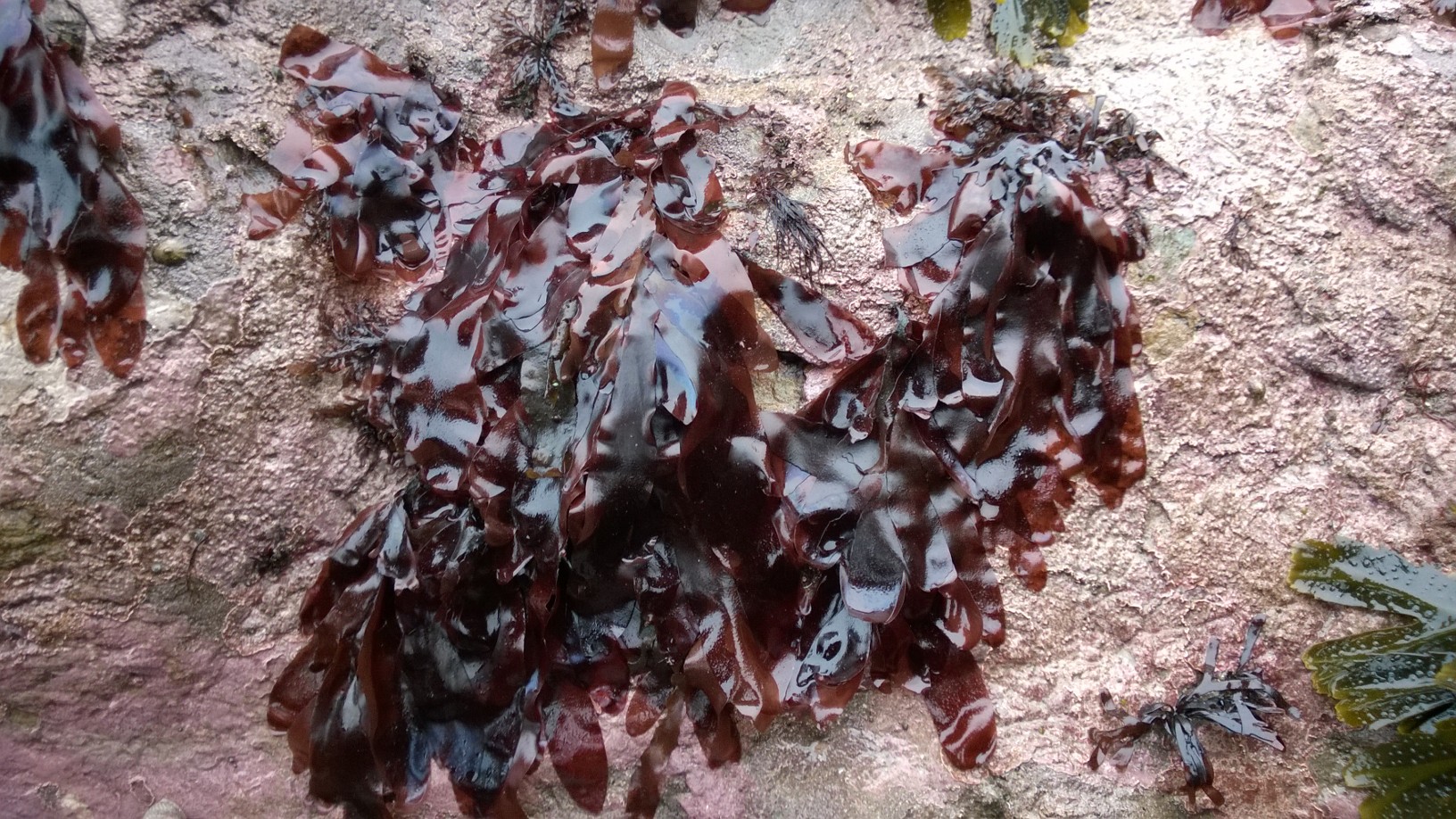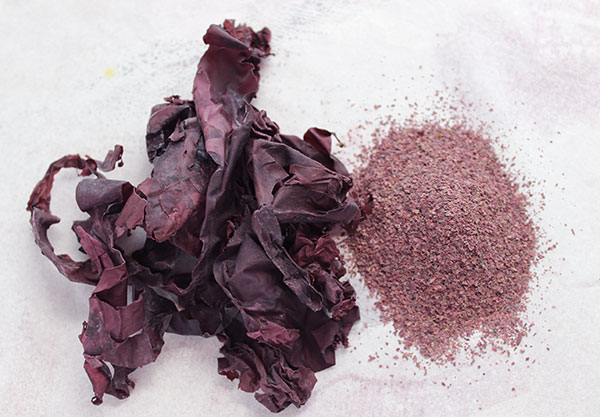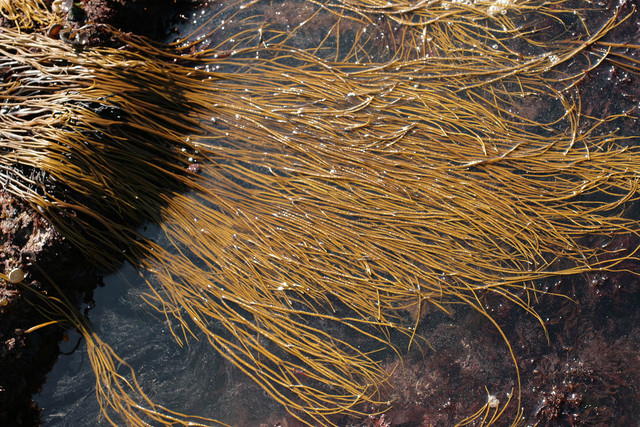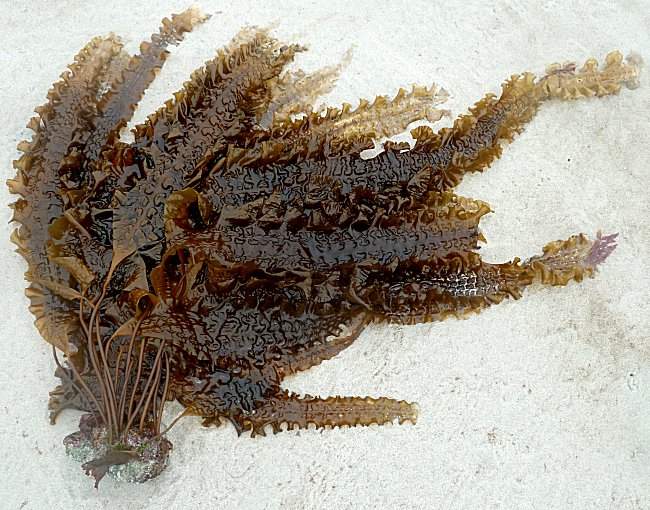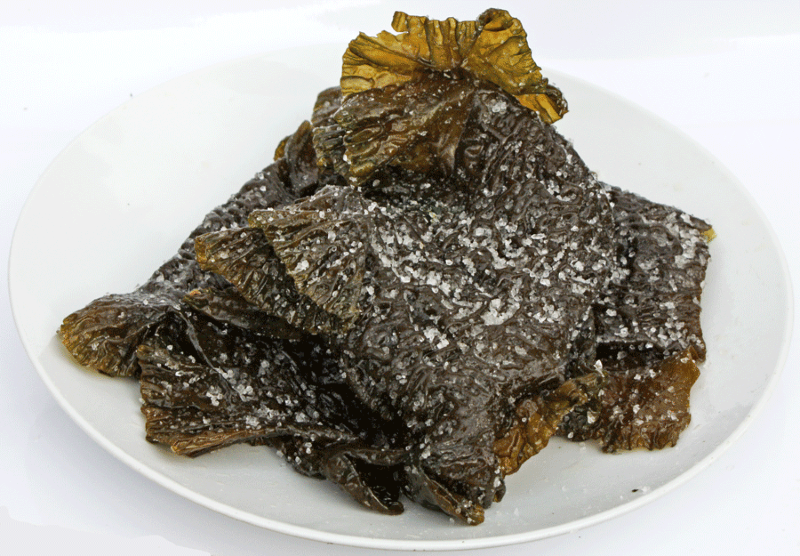Feel like something crunchy, a healthy and orignal snack? Ever try seaweed? In fact, there is actually a good chance you already are. They are often used as texture or thickening agents, the mysterious E401-E407s on the list of ingredients! Raw and/or relatively unprocessed, they are not so common.
Even if it is at the base of the food chain in the ocean, in Europe people have long neglected it, although it is very popular along Asians coasts. «Wrack» was mostly eaten in times of few, which could not quite help its reputation. However, they have great nutritional benefits and some have a great taste to boot!
Seaweeds in general are exceptionally rich in minerals (calcium, iron, magnesium) and above all in oligo elements (iode, magnesium, zinc and copper). They abound in rich mixtures of carotenoids, vitamin E and group B vitamins, like the rare vitamin B12. Weight watchers be happy to note that they have relatively little calories and fats. For vegetarians in particular they can be a good source of high quality protein just a little bit of supplement to the diet. They are a great source of fiber (up to 50%) of dry weight, which is great for digestion. Last but not least, taste-wise they add a special umami flavor to your dishes.
Some of the species that you are most likely to find in your local market include:
Nori Poryphora sp.
One of the most common: you can find it wrapped around your sushi! In Japan, annual production values over 100 billion yen, that is 1 billion euros! All species of Poryphora are edible, but in France the most common is Porypohora umbilicalis. You will recognize them in the wild by their fragile sheets, most often a deep purple-brown and reaching sizes of up to 60 cm. They colonise rocks and tide pools in the middle to the low part of the tidal range. Many recipes have alternative uses for the dried sheets that you can find in the supermarket. Our favorite is nori flakes on popcorn!
Wakame Undaira pinnatafida
Those sweet and tangy green seaweed salads you see in the supermarket? It is wakame! This delicious seaweed is cultivated in huge numbers in China, Korea and Japan (over 2 million tons/year) and some have started to farm it in Europe. Here, you will find it from the British Isles down to Portugal, as well as in the Mediterranean. It is quick growth rates and tendency to spread have it labelled as a potentially invasive species. If you live in area where it grows and want to pick some, look in areas sheltered from wave action but with strong currents.
Sea Lettuce Ulva sp
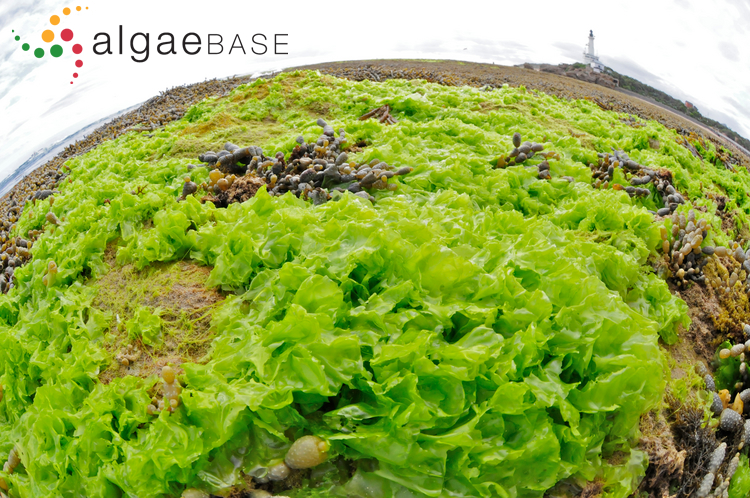
Huge, fluorescent blooms of this standout species make it periodically hit headlines around the world. However, in clean waters it is an easily identifiable and quite edible green seaweed. It grows in the middle of the tidal range. Most of the time that you will find it on sale, it will be sold dried in flakes. Like it is terrestrial counterpart, it is great in salads but also good in soups.
Dulse Palmaria palmata
This deep red seaweed is particularly rich in proteins. Fried, some say it tastes like bacon! No wonder it is one of the most traditionally consumed of these seaweeds in Europe. It might look a bit like Poryphora species, and is found in more or less the same areas. That said, it can be distinguished by its slightly thicker thalles and flat, branching nature. If you look for it in the market, you might find it powdered or in little flakes, to be used as a smokey, salty seasoning.
Sea Spaghetti Himanthalia elongata
Its common name describes it well. This brown algae is easy to identify as straight yellow ribbons growing up to 2 m in length. It can even be used as a fiber rich spaghettis noodle to make a seafood pasta dish. It grows in the lower parts of the tidal range, getting exposed only around low tide.
Kombu Laminaria digitata
Kombu, or Kelp is fonder of colder waters, present on Northern coastlines of Europe. It can make beautiful undersea gardens, usually around or just below the depth of average low tides. It makes a great soup base, for the record the umami taste was originally described from extracts of this type of seaweed! Cooking with it will speed up cooking times of beans and other vegetables.
Kombu Royal Laminaria saccharina
Royal Kombu, or Sugar Kelp is a brown seaweed that is attached to rocks by hook-like holdfast. Its long and undulated blades can reach several meters in length. It tastes much like the well-liked Wakame and can be prepared in similar fashion. It can also be used like regular Kombu, in soups or stews.
Want to give seaweed picking a try? Here are some basic rules of thumb:
- Do not rip out the base. Use a pair of scissors or a knife and only cut off the tips. This way you will ensure that it grows back (as well as getting the softest part).
- Seaweeds tend to accumulate pollution, try and find areas where there is good water flow (exposed to wave and currents) and far from sources of pollution.
- Watch the weather! Go on days with low spring tides, with little swell and wind.
- Do not eat seaweed that has been washed ashore, only those that you have picked yourself to avoid any kind of pollution risk.
- Rince off seaweed with clean and fresh water before eating them.
Toxic seaweeds are very rare, especially along European shores, but not all should be eaten. Before gathering yourself, look up local species and if possible go with someone who knows!
Have fun, and make sure to be sun smart! ?
